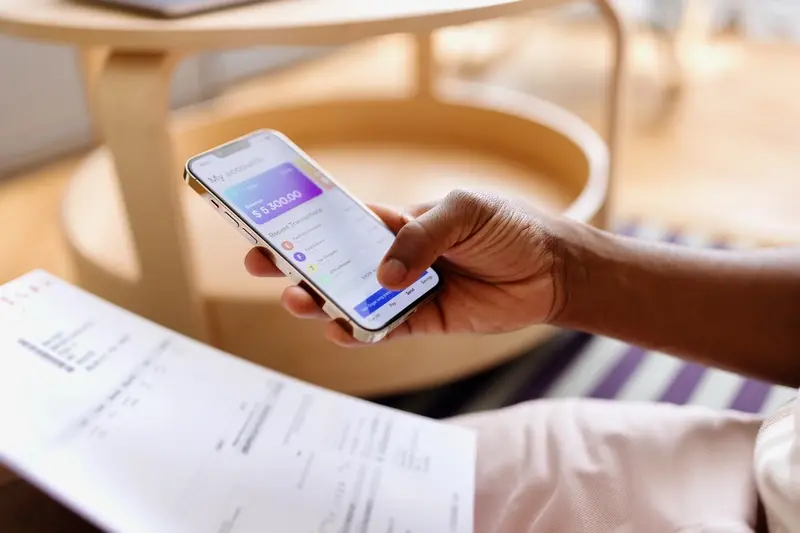How Much Does Biometric Login Really Cost to Build?
Biometric login has become one of those features that users just expect now—and honestly, its changed the way we think about app security completely. When I first started building apps, username and password combinations were the standard, but now? People want to unlock their banking app with their face or buy something with a fingerprint. It's quick, its convenient, and it feels more secure than trying to remember yet another password.
But here's the thing—when clients ask me about adding biometric login to their app, they usually have no idea what the actual cost looks like. They know they want it, they know their users expect it, but the pricing side? That's where things get a bit murky. The truth is, biometric authentication cost isn't just about writing some code and calling it a day; there's backend security to consider, platform differences between iOS and Android, testing requirements, compliance stuff...the list goes on really.
The cost of implementing biometric login varies massively depending on whether you're building something basic or creating a system that handles sensitive financial data and needs to meet strict regulatory requirements.
I mean, you could spend anywhere from a few hundred pounds for basic fingerprint authentication on a simple app, to tens of thousands if you're building a fintech platform that needs top-level security and compliance certifications. And that's before we even talk about ongoing maintenance costs. The question isn't really "how much does biometric login cost?"—it's more like "how much does the type of biometric login you actually need cost?" Because those are two very different conversations, and understanding that difference will save you a lot of confusion (and money) down the line.
Understanding Biometric Authentication Types
Right, so before we talk about what this stuff actually costs to build, we need to understand what we're dealing with here. Biometric authentication is basically just a fancy way of saying "using your body to prove who you are"—and honestly, its become the standard that users expect now, not some nice-to-have feature.
There are a few different types you'll come across when building mobile apps, and each one comes with its own technical challenges and cost implications. Fingerprint scanning was the first big one that really took off;it works by reading the unique patterns on your finger and comparing them to a stored version. Face recognition takes a photo or 3D scan of your face and does the same thing. Then you've got iris scanning, which looks at the patterns in your eye, and voice recognition that analyses how you speak.
But here's the thing—not all biometric authentication is created equal. Some methods are more secure than others, some are faster, and some just feel better to use. When I'm building an app, I always think about what makes sense for that specific use case. A banking app? You probably want the most secure option available. A fitness tracking app where users log in multiple times a day? Speed and convenience matter more.
Common Biometric Types
- Fingerprint scanning (Touch ID on iOS, various implementations on Android)
- Facial recognition (Face ID on iOS, face unlock on Android)
- Iris scanning (less common but very secure)
- Voice recognition (usually combined with other methods)
- Behavioural biometrics (how you type, swipe, or hold your device)
The other thing worth knowing is that modern mobile operating systems do most of the heavy lifting for you. Apple's Face ID and Touch ID, and Android's BiometricPrompt API handle the actual scanning and verification—you're just integrating with their systems. This is good news for cost, because you're not building the biometric tech from scratch (thank goodness for that).
The Base Cost of Adding Fingerprint Login
Right, let's talk numbers. When clients ask me about adding fingerprint authentication to their app, they usually expect it to be this massive technical undertaking that'll cost them thousands. Actually? Its one of the more straightforward features you can add—at least on the surface. The base implementation for fingerprint login typically runs between £800-£2,500 depending on your apps complexity and whether you're building for one platform or both.
Here's what that basic cost includes: integrating with the native biometric APIs (TouchID for iOS, BiometricPrompt for Android), creating the user interface flow for enrollment, handling fallback authentication when fingerprints dont work, and basic error handling. Most developers can knock this out in about 8-15 hours of work if your app already has a solid authentication system in place. The thing is—and this catches people out all the time—that's just for the frontend bit that the user sees and interacts with.
The real cost variation comes from what you're actually protecting and how your backend is set up. If you've got a simple app that just needs to unlock local content? You're looking at the lower end of that range. But if you need to generate secure tokens, communicate with your server, handle session management, or integrate with existing enterprise authentication systems...well, that cost can easily double or triple. I've seen projects where the fingerprint UI took 2 days but sorting out the secure backend infrastructure took 2 weeks.
What's Included in Basic Implementation
- Native API integration for fingerprint sensors
- User enrollment and setup screens
- Fallback to PIN or password when biometrics fail
- Basic error messaging and user guidance
- Local authentication without server communication
- Standard security key storage
One thing people always underestimate is device compatibility testing; not all Android devices handle fingerprint authentication the same way, even with the standardised APIs. You'll need to factor in some testing time across different devices and OS versions to make sure everything works smoothly. Budget wise, add another £300-£600 for proper quality assurance if you want to avoid angry users leaving 1-star reviews because it doesnt work on their specific phone model.
Start with a single platform first—usually iOS since TouchID implementation is more consistent—then expand to Android once you've validated the feature with real users. This approach cuts your initial development cost nearly in half whilst giving you valuable feedback.
Face ID and Facial Recognition Pricing
Right, so you want to add facial recognition to your app—this is where things get a bit more complex than fingerprint authentication, and honestly, the costs reflect that complexity. Face ID on iOS is pretty straightforward to implement because Apple's done all the heavy lifting for you; you're basically tapping into their existing FaceID framework which means your development costs sit around £800-1,500 for basic implementation. Not too bad, is it?
But here's the thing—if you need facial recognition on Android or you want a custom solution that works across platforms, you're looking at a completely different ballgame. Android doesn't have the same unified facial recognition system that iOS does (at least not one thats as secure), so you've got a few options. You can use Android's BiometricPrompt API which supports face unlock on compatible devices for roughly £1,200-2,000, or you can build something custom using machine learning libraries like ML Kit or TensorFlow Lite.
Custom facial recognition? Bloody hell, that gets expensive quickly. We're talking £8,000-25,000+ depending on the accuracy requirements and security level you need. Why so much? Well, you're essentially building the recognition system from scratch—training models, handling different lighting conditions, preventing spoofing with photos or videos, managing edge cases. Its genuinely complex work.
Cost Breakdown for Different Approaches
- iOS Face ID integration: £800-1,500 (uses Apple's secure hardware and software)
- Android BiometricPrompt with face unlock: £1,200-2,000 (limited to compatible devices)
- Cross-platform third-party SDK: £3,000-8,000 (plus ongoing licensing fees of £200-800/month)
- Custom ML-based solution: £8,000-25,000+ (requires ongoing model updates and improvements)
- Enterprise-grade liveness detection: additional £2,000-5,000 (prevents photo/video spoofing)
Most apps I build these days just stick with the platform-native options—they're secure, users trust them, and they don't break the budget. Unless you've got specific requirements that demand custom facial recognition (like needing to work on older devices or requiring additional biometric data), the native route makes the most sense from both a cost and security perspective.
Backend Security and Data Storage Costs
Right, so here's where things get a bit more expensive than most people expect—the backend infrastructure that supports biometric login isnt cheap. I mean, you'd think the fingerprint scan happens on the device and that's that, but there's actually quite a lot going on behind the scenes; your backend needs to handle authentication tokens, manage user sessions, and store encrypted credentials securely. This is where biometric security pricing can jump from a few hundred pounds to several thousand, depending on how you set things up.
The good news? You dont actually store the biometric data itself on your servers. That would be a nightmare for security and compliance. Instead, what happens is the device creates a secure token after verifying the fingerprint or face, and that token is what your backend validates. But—and this is important—you still need secure infrastructure to handle those tokens properly. We're talking about SSL certificates, encrypted database storage, and proper API security. For a basic setup with decent security, you're looking at around £800-£1,500 just for the initial backend configuration.
The backend infrastructure supporting biometric authentication typically costs three to five times more than basic username and password systems due to enhanced security requirements
Then there's ongoing costs. Your backend needs regular security patches, monitoring for suspicious login attempts, and proper logging of authentication events (because GDPR requires you to track this stuff). Most clients I work with end up spending £100-£300 monthly on backend maintenance once their biometric login is live. Its not glamorous, but its absolutely necessary if you want your app authentication cost to include proper security. The alternative—cutting corners on backend security—is honestly just asking for trouble down the line.
Platform Differences Between iOS and Android
Here's something that catches a lot of people off guard—biometric implementation costs can vary quite a bit between iOS and Android. I mean, you'd think it would be roughly the same, but its really not that simple.
Apple makes things relatively straightforward with their Face ID and Touch ID APIs. They're built into the system, well documented, and honestly pretty easy to work with. The tricky part? You need actual Apple hardware to test properly, which means your development team needs iPhones and iPads with biometric sensors. That adds to your costs if you don't already have them lying around.
Android is where things get a bit messier. Google provides the BiometricPrompt API which standardises biometric authentication across devices, but—and this is important—Android runs on thousands of different devices from dozens of manufacturers. Samsung implements fingerprint sensors differently than Google does. OnePlus has its own quirks. Xiaomi does something else entirely.
What This Means for Your Budget
The development time for Android biometric features typically runs 30-40% longer than iOS because of all this device fragmentation. You're not just building once; you're testing across multiple device types to make sure everything works properly. Some older Android devices don't even support modern biometric APIs at all, which means you might need fallback authentication methods.
Testing Requirements by Platform
- iOS: Test on 2-3 device models covering Touch ID and Face ID (iPhone 8, iPhone X or newer, iPad)
- Android: Test on 5-7 devices minimum including Samsung, Google Pixel, and at least one budget device
- Both platforms: Test biometric failure scenarios and account for users without biometric hardware
- Consider simulator limitations—physical devices are essential for proper biometric testing
The good news is that once you've done the groundwork, maintaining biometric features isn't too difficult on either platform. But that initial implementation? Budget more time and money for Android, every single time.
Testing and Compliance Requirements
Right, so you've built your biometric login feature—but you're not done yet. Not even close, actually. Testing biometric features is properly expensive because you cant just run automated tests and call it a day; you need real devices, real faces, real fingers. And lots of them.
Budget around £3,000-£8,000 for proper testing of fingerprint authentication and Face ID features. This includes testing across different device models (iPhone 8 through to the latest models, various Android devices with different fingerprint sensors), different lighting conditions for facial recognition, and edge cases like wet fingers or users wearing glasses. I mean, you'd be surprised how many apps fail when someone's just washed their hands or is wearing sunglasses—its these real-world scenarios that matter most.
Compliance and Security Audits
Here's where things get expensive. If you're handling sensitive data (and biometric information definitely counts as sensitive), you'll need proper security audits. GDPR compliance isn't optional if you're operating in the UK or EU; you need to prove you're storing biometric data correctly—or better yet, not storing it at all but using the device's secure enclave instead.
Security audits for apps with biometric features typically cost between £5,000-£15,000 depending on your apps complexity and the data you're handling. Financial apps (fintech) will be at the higher end of that range because the stakes are higher. Healthcare apps? Even more scrutiny there.
Don't skip penetration testing for biometric features. A proper pen test will cost £2,000-£5,000 but it's worth every penny—one security breach will cost you far more in reputation damage and potential fines.
Accessibility Testing
Something people often forget: not everyone can use biometric login. You need fallback options tested thoroughly, which adds another £1,000-£2,000 to your testing budget. But its legally required in many jurisdictions, so factor it in from the start rather than scrambling to add it later when someone points out the problem.
Ongoing Maintenance and Update Costs
Here's what people don't tell you when they quote the initial build cost—biometric systems need constant care and attention. I mean, it's not like you can just build it once and walk away.
Every year you'll need to factor in maintenance costs that typically run between 15-20% of your original development budget. So if you spent £5,000 building your biometric login, expect to spend around £750-1,000 annually just keeping it running properly. And thats before any major updates or changes.
What You're Actually Paying For
The thing is, mobile operating systems update constantly—iOS releases a major update every year, and Android does the same. Each time they do, theres a chance your biometric implementation might break or need adjustments. We've had clients whose Face ID integration stopped working properly after an iOS update because Apple changed how certain APIs behaved. Not fun.
Security patches are another ongoing expense. When new vulnerabilities get discovered (and they do, regularly), you need to respond quickly; users rightfully expect their biometric data to be protected with the latest security standards. Ignoring these updates isn't just bad practice—it can actually violate compliance requirements like GDPR.
The Hidden Costs Add Up
Beyond just technical updates, you'll need to support new device models as they launch. Each new iPhone or Android flagship might handle biometrics slightly differently, and you need to test your app works properly on them. Its a bit mad really how much testing is involved.
Here's a breakdown of typical annual maintenance costs:
- OS compatibility updates (iOS and Android): £600-1,200
- Security patches and vulnerability fixes: £400-800
- New device testing and optimisation: £300-600
- Bug fixes and minor improvements: £500-1,000
- Compliance audits and documentation: £200-500
And look, some years you'll get away with minimal changes. Other years? Apple will completely overhaul their security framework and you'll need to basically rebuild portions of your integration. It happens more often than you'd think.
Conclusion
So thats the full picture on biometric login costs—from the basic fingerprint setup that might only set you back £800-1,200 for a simple implementation, all the way through to comprehensive Face ID systems with backend security that could easily reach £8,000-12,000 or more. Its not a straightforward answer, I know, but honestly thats because every app has different needs and different security requirements.
Here's the thing though; biometric authentication isn't just a nice-to-have feature anymore. Your users expect it. They've got it on their banking apps, their payment apps, their social media. When they download your app and have to type in a password every single time? It feels dated. It feels clunky. And worse, it actually makes your app less secure because people end up using weak passwords they can remember or—bloody hell—the same password they use everywhere else.
The real cost of biometric login isn't just what you pay upfront for development; its what you save in reduced support tickets from password resets, what you gain in user retention because login is frictionless, and what you protect in terms of user data and trust. I've seen apps increase their daily active users by 20-30% just by adding fingerprint authentication because people actually opened the app more frequently when they didn't need to remember credentials.
My advice? Start with the basics—native platform APIs for fingerprint or Face ID, proper backend security, and rock-solid testing. You can always add more sophisticated biometric options later as your app grows and your budget allows. But whatever you do, don't cut corners on the security side of things. A biometric system that isn't properly secured is worse than having no biometric system at all, because it gives users a false sense of protection whilst actually leaving them vulnerable.
Share this
Subscribe To Our Learning Centre
You May Also Like
These Related Guides

How Much Does It Cost To Build A Banking App?

What's The Difference Between Junior And Senior App Developer Rates?



